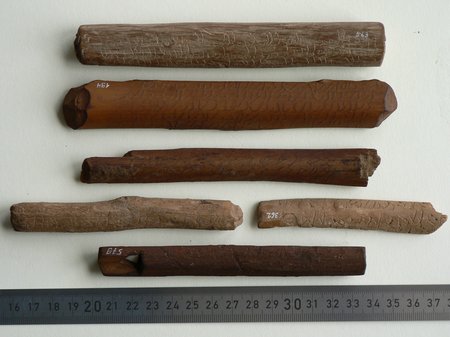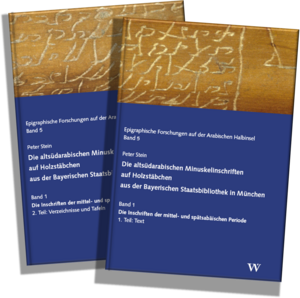Editing of Ancient South Arabian minuscule inscriptions on wooden sticks from the Bavarian State Library in Munich (2002-2009)
(2002-2009)

The inscriptions carved in wooden sticks and palm-leaf stalks comprise documentary texts from southern Arabia in the pre-Islamic period (10th century BC to 6th century AD). In contrast to monumental inscriptions on stone blocks, rock and metal plaques, which were intended for public display, these handy wooden sticks were used to lay down private and business correspondence, economic accounts, contracts, and records from the religious practice – testifying for daily life activities of the Sabaeans and their neighbours. Due to their purpose and writing support, these texts are written in a particular cursive script. Several thousands of such documents, most of which originating from one public archive in the wadi al-Jawf in northern Yemen, are housed by a number of public collections in Yemen (Sanaa) and abroad (particularly in Leiden and Munich). The collection of the Bavarian State Library (BSB) in Munich, comprising about 400 texts of different genres and date, was subject of a cooperation project with the department for Semitic studies of Friedrich-Schiller-Universität Jena during the years 2002-2009, funded by the German Research foundation (DFG). As a result, the first part of this collection, comprising 205 Sabaic texts from the 3rd century BC to the early 6th century AD, was published in 2010 (P. Stein, Die altsüdarabischen Minuskelinschriften auf Holzstäbchen aus der Bayerischen Staatsbibliothek in München. Bd. 1. Die Inschriften der mittel- und spätsabäischen Periode [EFAH 5], Tübingen/Berlin 2010). The second volume of this edition, which is devoted to the earlier Sabaic and the Minaic texts, is currently under preparation.
Weblink to the digital collections of the BSB:
https://www.digitale-sammlungen.de/index.html?c=suchen&ab=&kl=&l=de
(search for signature "Mon.script.sab.")

People:
Prof. Dr. Norbert Nebes (Principal Investigator)
Dr. Peter Stein (Research fellow)
